The AMD Ryzen 3 1300X and Ryzen 3 1200 CPU Review: Zen on a Budget
by Ian Cutress on July 27, 2017 9:30 AM EST- Posted in
- CPUs
- AMD
- Zen
- Ryzen
- Ryzen 3
- Ryzen 3 1300X
- Ryzen 3 1200
Grand Theft Auto
The highly anticipated iteration of the Grand Theft Auto franchise hit the shelves on April 14th 2015, with both AMD and NVIDIA in tow to help optimize the title. GTA doesn’t provide graphical presets, but opens up the options to users and extends the boundaries by pushing even the hardest systems to the limit using Rockstar’s Advanced Game Engine under DirectX 11. Whether the user is flying high in the mountains with long draw distances or dealing with assorted trash in the city, when cranked up to maximum it creates stunning visuals but hard work for both the CPU and the GPU.
For our test we have scripted a version of the in-game benchmark. The in-game benchmark consists of five scenarios: four short panning shots with varying lighting and weather effects, and a fifth action sequence that lasts around 90 seconds. We use only the final part of the benchmark, which combines a flight scene in a jet followed by an inner city drive-by through several intersections followed by ramming a tanker that explodes, causing other cars to explode as well. This is a mix of distance rendering followed by a detailed near-rendering action sequence, and the title thankfully spits out frame time data.
There are no presets for the graphics options on GTA, allowing the user to adjust options such as population density and distance scaling on sliders, but others such as texture/shadow/shader/water quality from Low to Very High. Other options include MSAA, soft shadows, post effects, shadow resolution and extended draw distance options. There is a handy option at the top which shows how much video memory the options are expected to consume, with obvious repercussions if a user requests more video memory than is present on the card (although there’s no obvious indication if you have a low end GPU with lots of GPU memory, like an R7 240 4GB).
To that end, we run the benchmark at 1920x1080 using an average of Very High on the settings, and also at 4K using High on most of them. We take the average results of four runs, reporting frame rate averages, 99th percentiles, and our time under analysis.
For all our results, we show the average frame rate at 1080p first. Mouse over the other graphs underneath to see 99th percentile frame rates and 'Time Under' graphs, as well as results for other resolutions. All of our benchmark results can also be found in our benchmark engine, Bench.
MSI GTX 1080 Gaming 8G Performance
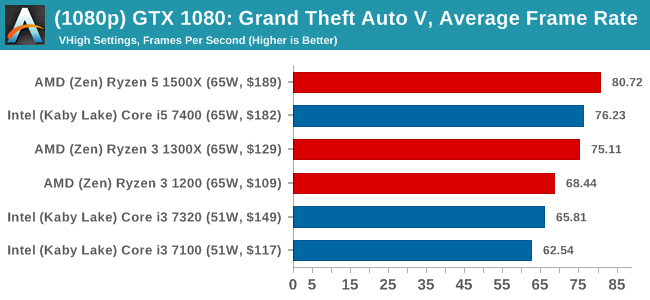
1080p

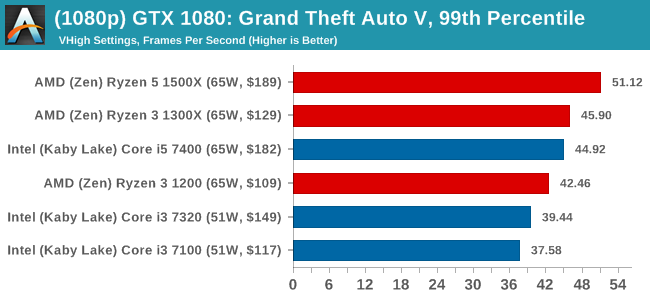
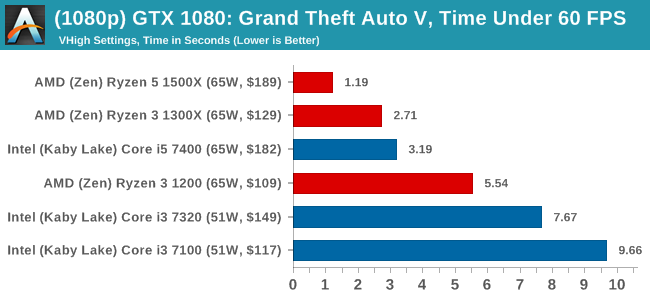
4K
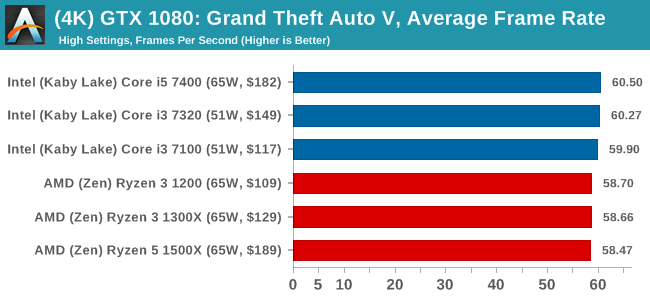
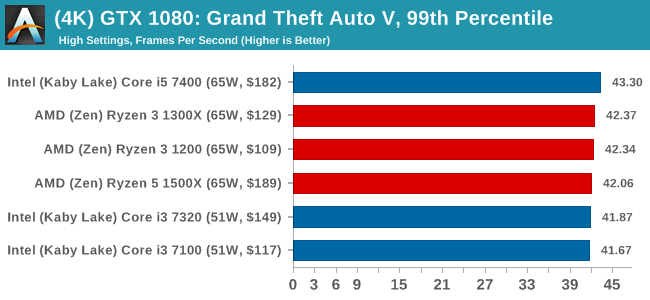
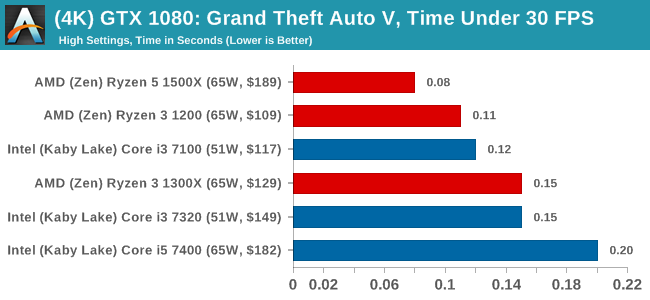
ASUS GTX 1060 Strix 6GB Performance
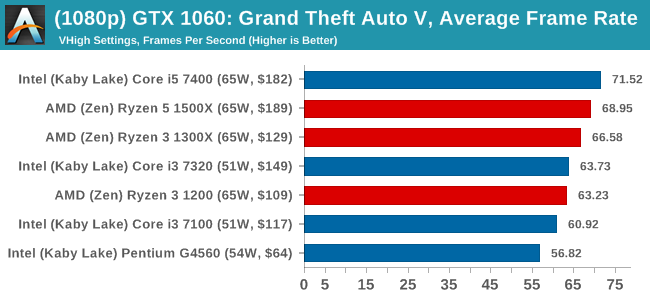
1080p

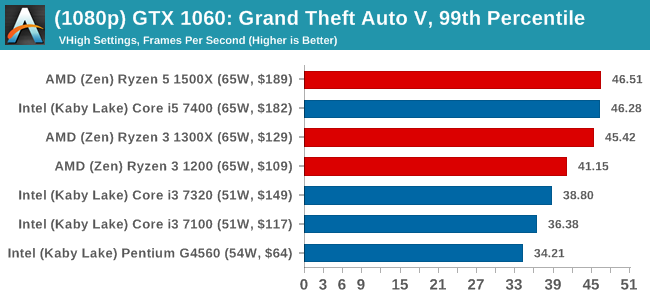
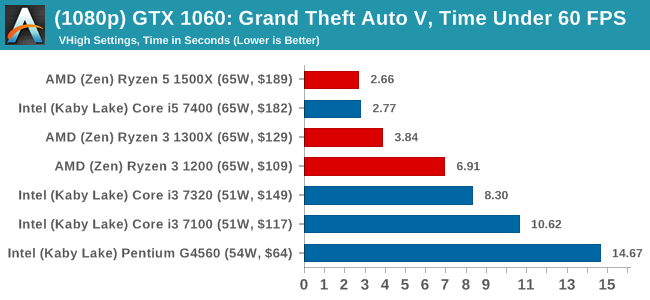
4K
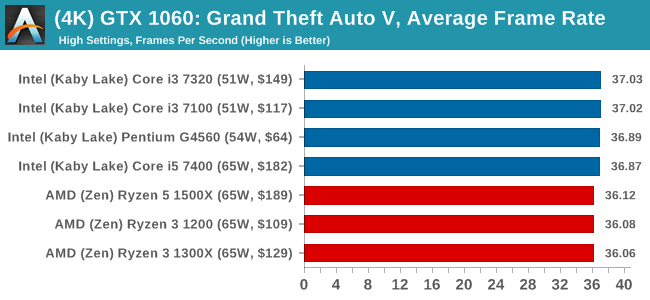

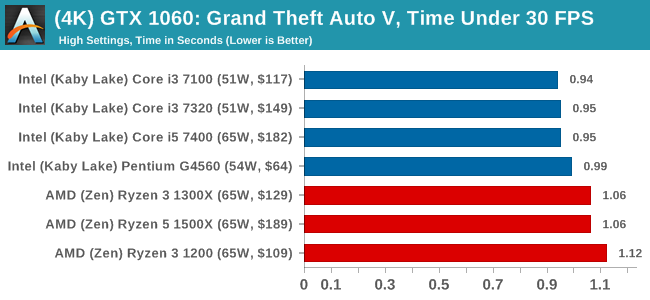
Sapphire R9 Fury 4GB Performance
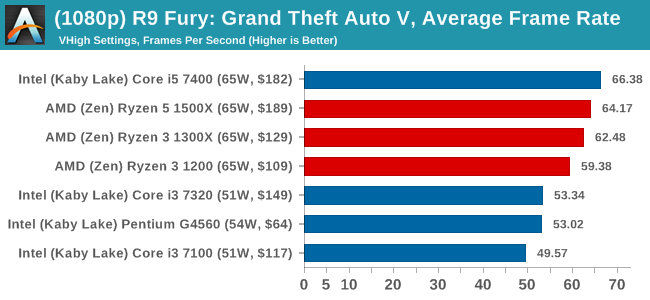
1080p

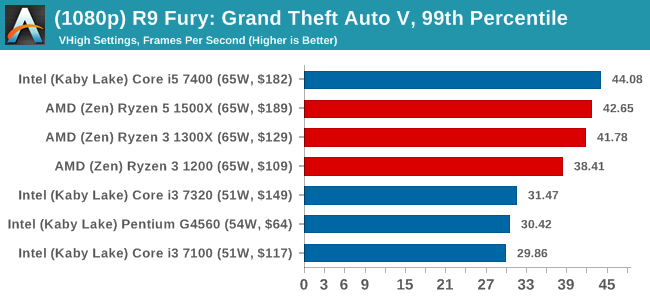
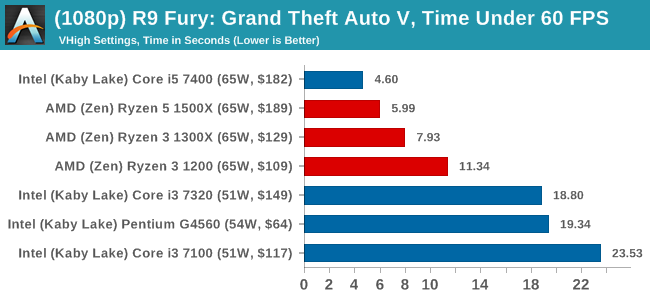
4K
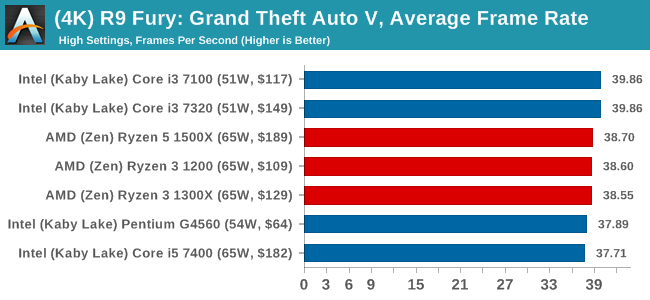
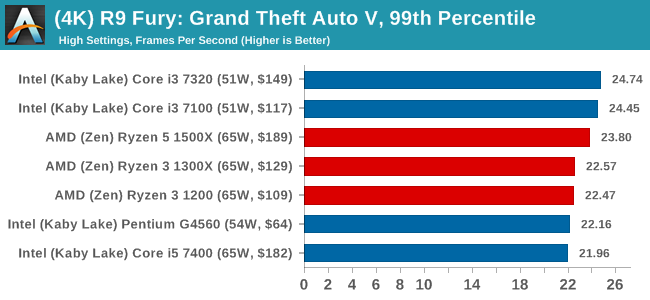

Sapphire RX 480 8GB Performance
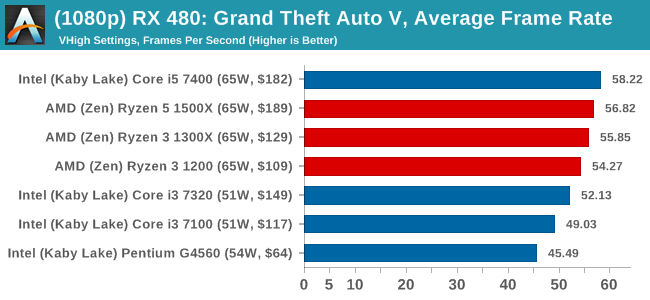
1080p

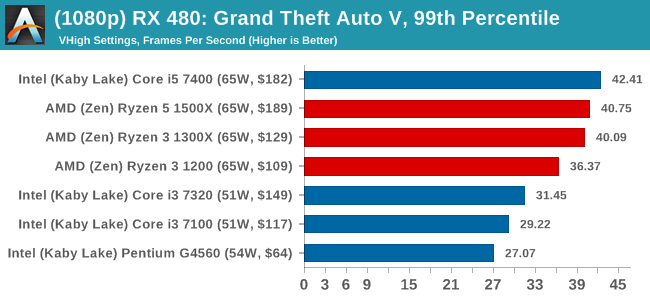
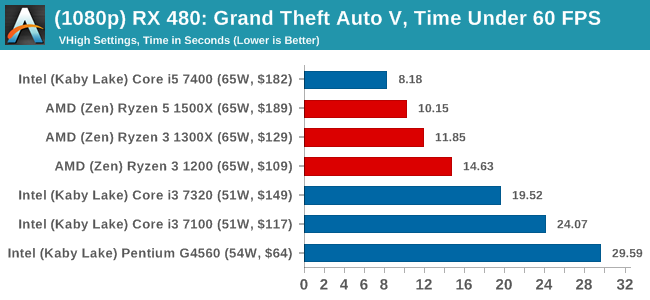
4K
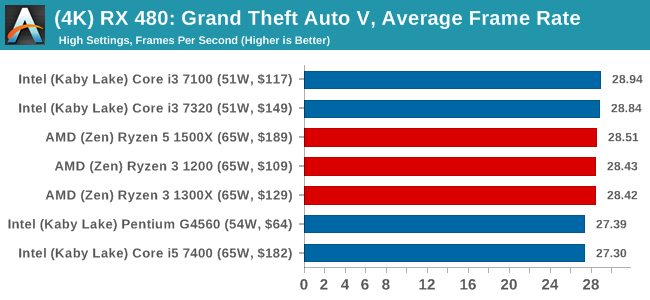
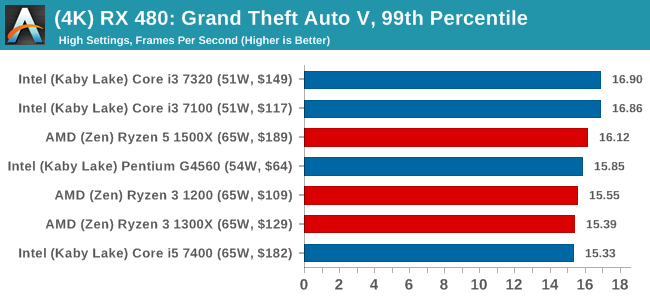
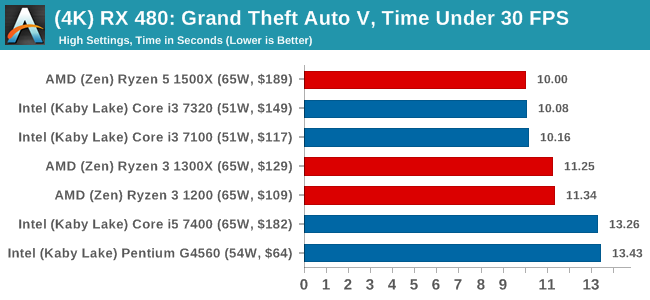













140 Comments
View All Comments
dave_the_nerd - Thursday, July 27, 2017 - link
Yes, obviously. That would be terrible.Oxford Guy - Thursday, July 27, 2017 - link
I'm glad you're not a tech reviewer. You could just say "Obviously" for every technical detail and that would be your article.Gothmoth - Thursday, July 27, 2017 - link
you can overclock the cheap AMD cpus... what about the intels?i am to lazy to check but are the testets intels k models? i guess not.
ddhelmet - Friday, July 28, 2017 - link
One thing I am really curious about is Citra performance. It would be an important test for single thread performance. All about that IPC.serendip - Friday, July 28, 2017 - link
Sorry but I don't see the point of these chips. An i3 is supposed to be a cheap do-everything CPU for basic business and school PCs. The Ryzen 3 not having a GPU really hurts its chances in those segments and it probably won't get picked up by OEMs. AMD needs mass market sales right now and Ryzen APUs can't come soon enough.I'm also wondering if yields are good enough that Ryzen 7s are the main chips being produced, with few 5s and 3s left over from the 7s that didn't meet spec.
Outlander_04 - Saturday, July 29, 2017 - link
The core count of the Ryzen chips is going to be a significant advantage over any dual core .Adding a basic graphics card will cost about $30 . For that you free up system RAM that the onboard would otherwise be using, and you get decent drivers that let you make some adjustments that intel removed when they dumbed down their drivers a few years back
serendip - Saturday, July 29, 2017 - link
Yeah but most office tasks run fine on 2 cores. Most users probably won't even notice they're using quad core processor.That $30 extra is a lot when it comes to speccing thousands of machines. A cheap discrete GPU is also another potential point of failure that large enterprises might not want on a big rollout. I understand the enthusiast reasoning for a cheap but powerful CPU like the Ryzen 3 paired with a decent midrange card, but this setup doesn't make sense for large corporate orders. AMD needs to sell lots of chips to large clients to survive.
Outlander_04 - Saturday, July 29, 2017 - link
It's not just the "Office tasks". Its the network services, antivirus and updating that goes on in what should be the background, but is not when you have a dual-core. I speak from experience. The HP desktops we have at work can be frustrating.buxe2quec - Friday, July 28, 2017 - link
Posting a review with placeholders for the benchmarks is definitely not professional.Delay it two days and post it in full, or split it in two reviews.
Looks like clickbaiting...
supdawgwtfd - Friday, July 28, 2017 - link
Ian. Your a shill. Or you just completely biased.Every single other review i have read has said the Ryzen 3 it the better option. In price and performance.
WTF has happened to Anandtech? Why are you guys spewing BS? Why can't you be unbiased?
Seriously?
Have been reading the site for almost 20 years. I think i will now have to officially NOT come here again...